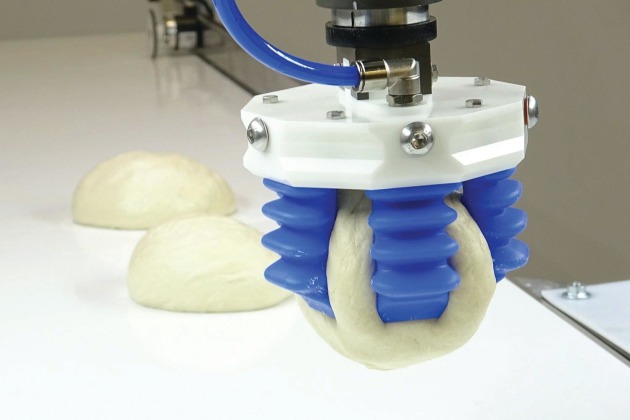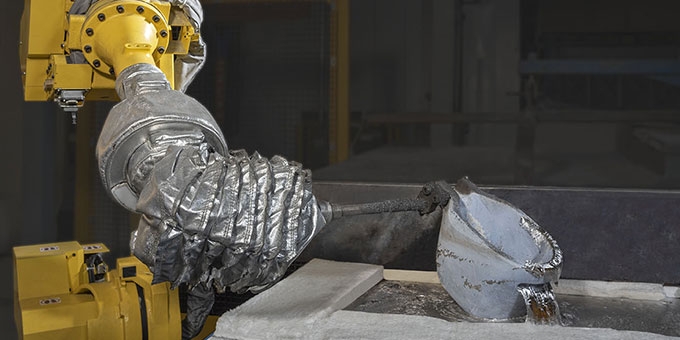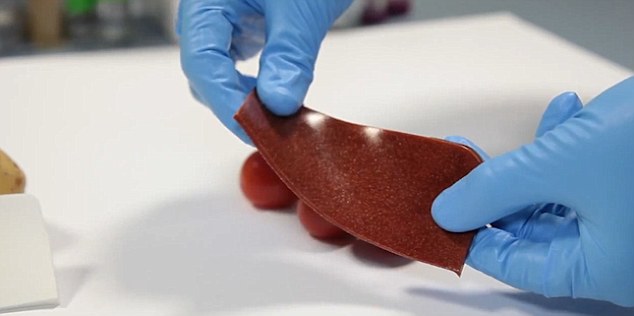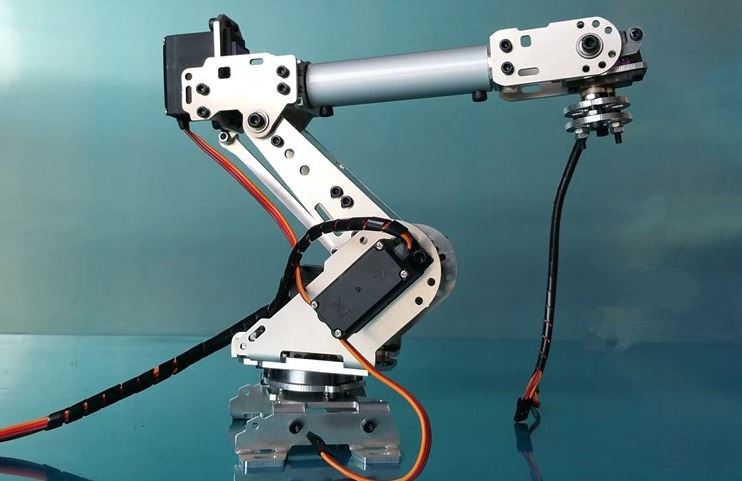5 materials to evaluate for designing, building robust robots
Other considerations include ease of cleaning and repair, weight (which affects overall power requirements), design for manufacturing, and, of course cost. Collaborative robot arms, or cobots, are very different autonomous underwater vehicles, aerial drones, or other field robots. A robot that works inside an MRI machine must be made of certain materials, while a stationary robot in a factory may need other characteristics.
Here are some of the materials to keep in mind when designing and building robots.
1. Steel
Steel is one of the materials used most often by robot builders. This sturdy metal is a smart choice if you’re building a robot that needs to stand up to harsh conditions. It’s possible to harden the steel to between 100,000 and 300,000 pound-force per square inch (psi) in many cases.
.jpg)
If you plan to harden the steel, look for some with high carbon content. Usually, the more carbon that steel contains, the more suitable it is for making harder through heat treatments.
Ultra-wear resistant kinds of steel are also available, as well as steel that stands up to frequent impacts. Bear in mind that this material can be challenging to work with if you don’t have the proper tools, such as those used for welding. That’s especially true if you need to make the steel conform to a particular shape to streamline your robot’s body. Russia’s Uran-9 robotic tank obviously has steel construction, and its problems in the field were because of communications problems, not materials.
2. Rubber
Demand is growing for commercial robots with flexible exteriors, such as human-like “skin”. Moreover, it’s advantageous for cobots that work alongside humans to have soft surfaces. Rubber and soft plastics can meet that goal. At the University of Houston, a research team used a rubber composite material to make a semiconductor. The electronics retained functionality even after researchers stretched the rubber by 50%. Working with traditional semiconductors while building robots is tricky because they’re easy to break — certainly not an ideal characteristic for a robot that needs to flex.
While showing off their work, the researchers designed a robotic skin that can sense the temperature after being immersed in a cup of water. Then, to prove the breadth of potential applications of the project, they made the hand able to receive computer signals and reproduce them as American Sign Language. Teams at Stanford University and the National University of Singapore are also working on robots with polymer skins for a sense of touch.

Even if your robot has a rubbery exterior, it typically houses hard components inside it, including processors and actuators. However, a more recent project involved engineering a soft robot with a computer also made rubber. Robots with rubber bodies are typically safer than those made harder materials. Plus, they work well for handling delicate products like fruit. Soft Robotics’ grippers conform to such objects in pick-and-place tasks without damaging them.
At some Disney theme parks, robots interact with guests, and there are plans to eventually expand upon animatronics that are behind glass or removed people to the point of robots that walk around the parks. It’s easy to see why rubber and plastics are useful for robots that are both lifelike and safer to operate around people.
3. Aluminum
Although aluminum has a higher price point than steel, it’s easier to shape and is lighter. Aluminum is also a good material if you’re worried about a robot’s exterior becoming rusty over time because aluminum does not rust. However, because it can corrode in some wet environments, you might consider treating the surface to give it more protection against possible corrosion.
Another thing that makes aluminum a popular option for robot exteriors is that it can be polished to a high shine. So, if you’re building a commercial robot that your client will eventually want to show off, aluminum makes the body look nice while offering ample durability. You can also work with specialists that provide aluminum polishing technology with three-way machines, which enable programming to meet double-sided processing needs.
Some designers also use aluminum on robot bodies to protect more fragile parts. In one example, Italian scientists made a robot strong enough to pull a 7,200-pound airplane down a runway. The robot, which had four electric motors, four hydraulic actuators and a pair of computers, housed its parts in an aluminum roll cage.
4. Kevlar
Kevlar is a synthetic fiber frequently used for bulletproof vests. Some of its characteristics make it worth evaluating for robot exteriors, too. You could use it as a covering on robots that require safeguarding extreme temperatures. Many heat-resistant gloves feature Kevlar because the material does not melt or drip when exposed to hot environments. Also, Kevlar does not degrade in Arctic temperatures of -50 degrees Fahrenheit, nor do cryogenic conditions adversely affect the fibers.
Roboworld Molded Products LLC makes Robosuits - many of which contain Kevlar - to protect sensitive parts of your robot’s exterior in demanding temperatures. While Robosuits are custom-designed depending on needs, one that includes Kevlar would be suitable for a welding application.

The Robosuit fits over the robot’s body without affecting its articulation or reach. This easy-to-use protection could maintain the robot’s functionality by helping it tolerate exceptionally hot or cold temperatures. Without a covering like these Kevlar designs, cold temperatures can adversely affect the grease or other lubricants for internal parts, while heat can make motors get too hot and shut down. An external cover keeps the robot within its recommended operating temperature range by giving radiant heat protection.
5. Biodegradable ‘smart’ materials
The materials mentioned above are all relatively easy to source and have different levels of durability depending on the need. However, you may not know about efforts to create biodegradable materials. Researchers in Italy have ways to create robots bioplastics composed of food waste.
Since most conventional plastics contain petroleum - a substance that contributes to climate change - researchers think their alternative would help the planet, especially in seafaring probes. In addition, these so-called biodegradable smart materials are versatile. Scientists have created a robot skin them and said the bioplastics could be hard enough for internal parts, as well.
In the U.K., experts at the Bristol Robotics Laboratory have worked on a robot that decomposes after completing its mission. It might assist with a search-and-rescue effort at a disaster site and start breaking down its body afterward. Then, humans would not have to find and retrieve the robots, and the biodegradable materials wouldn’t harm the planet.

Investors and developers have become increasingly aware of the need for eco-conscious and sustainable robotics development. Recycled materials and biodegradable plastics would go a long way to helping them achieve that goal.
The right materials for the robot job
This is just an introductory list to some of the most commonly used materials for robot exteriors. Of course, the material a robot uses will depend primarily on its purpose. For instance, materials used in robot-assisted surgery must be able to withstand rigorous sterilization techniques. In this case, a polymer like acrylonitrile butadiene styrene (ABS) would fare far better than a material that can’t stand up to medical requirements and regulations. Some soft robotics materials can even “feel” pain and heal themselves.
Robots used in clean rooms, food handling and aquatic settings also have special needs to consider. A buoyant robot, for example, will require a lightweight and water-resistant material. On the other hand, a biomimetic robot would need a soft and flexible substance that can grip and move around comfortably. Reflecting on these unique demands is a crucial part of the creation process.
*Source: https://www.therobotreport.com/materials-rugged-robot-design-building/
**Image source: Internet


 Chia sẻ:
Chia sẻ: